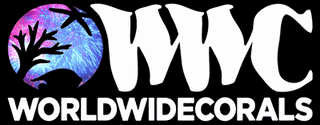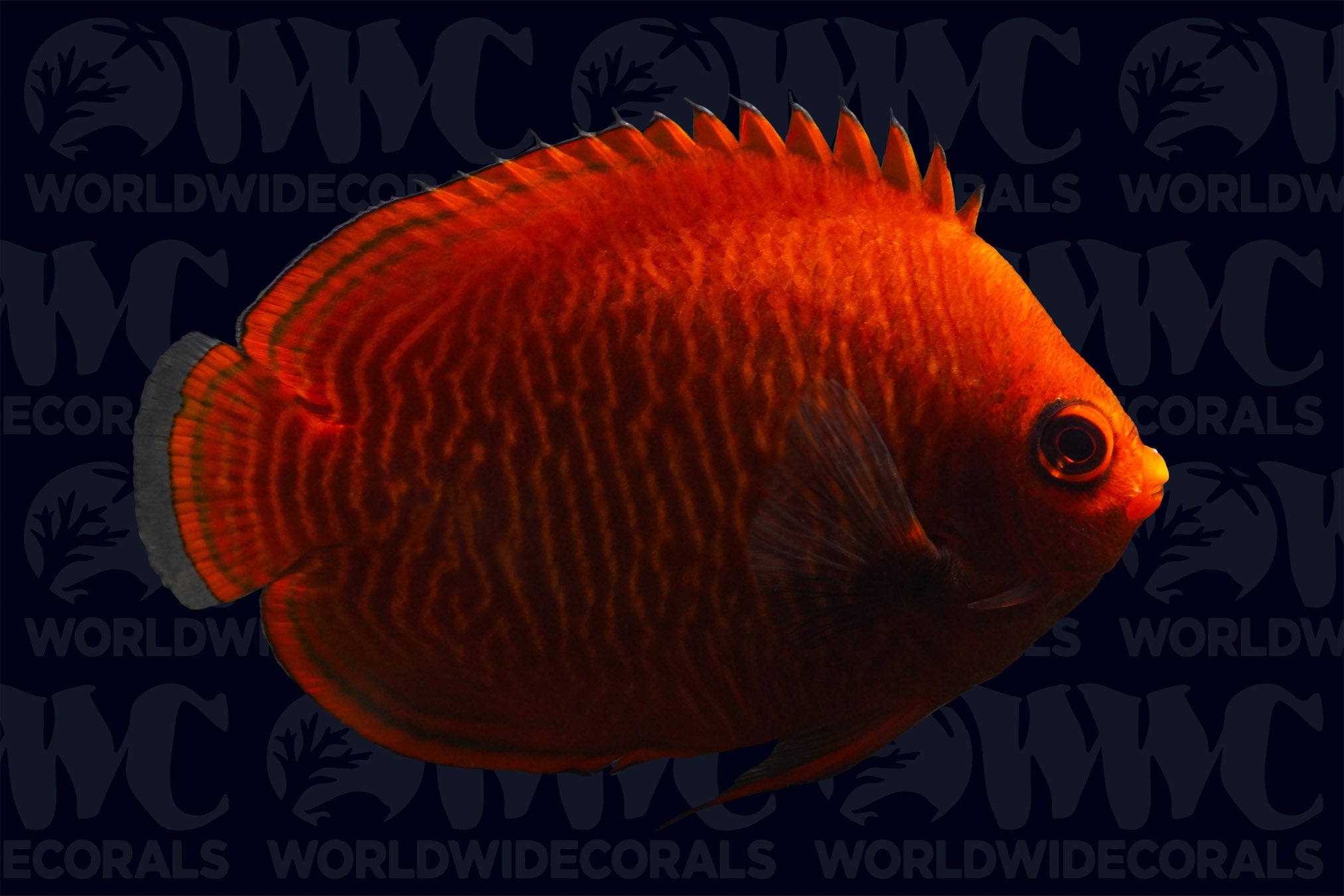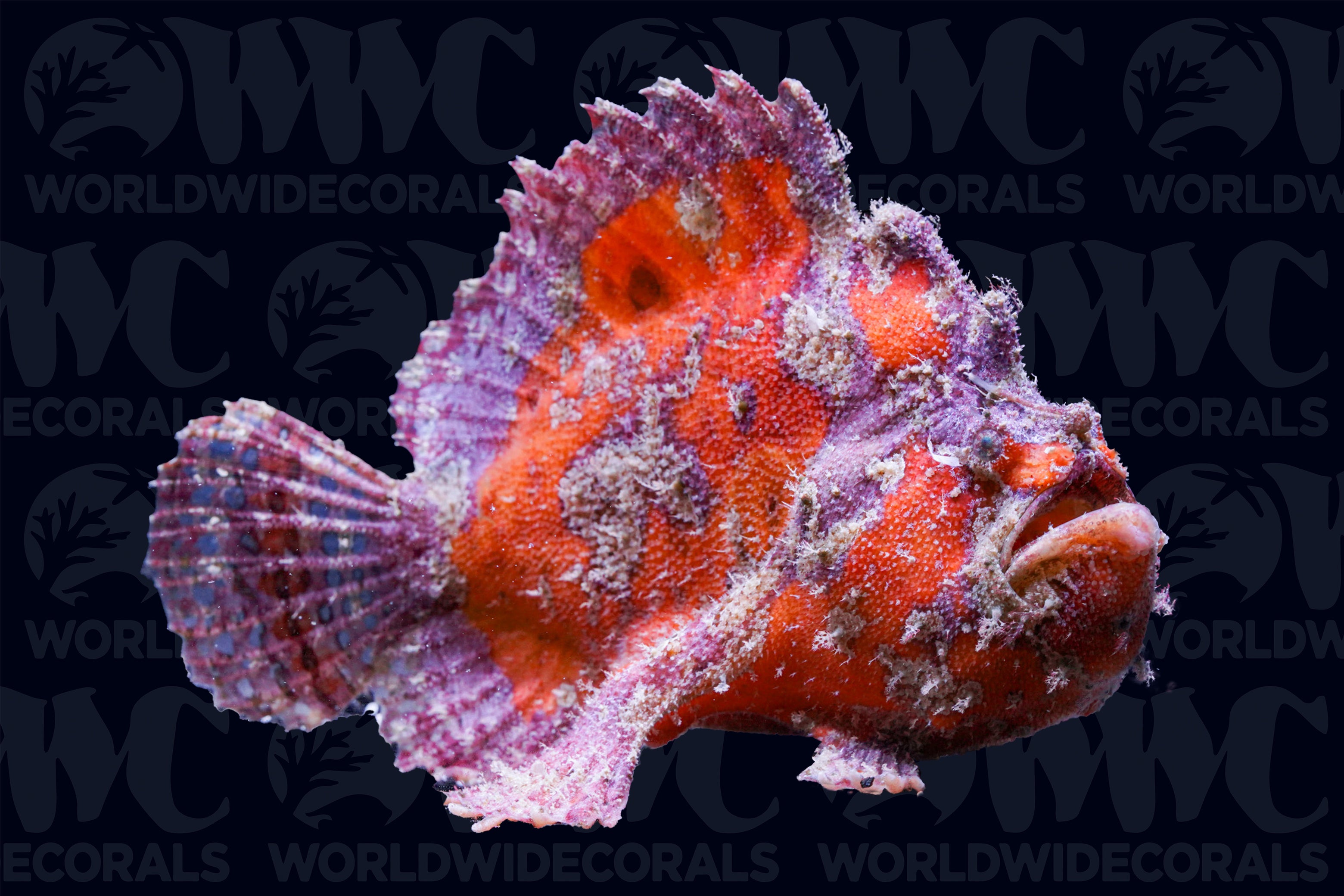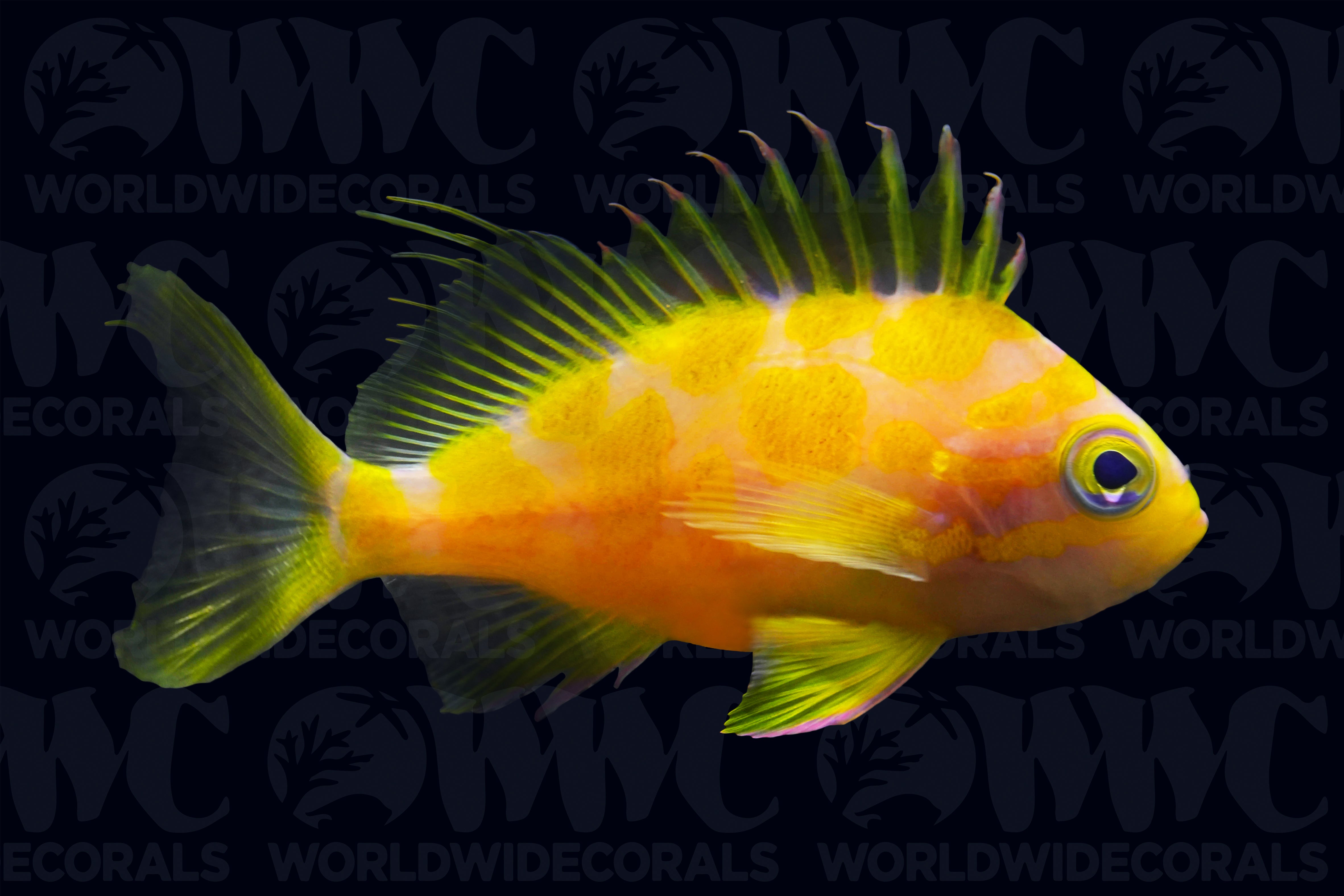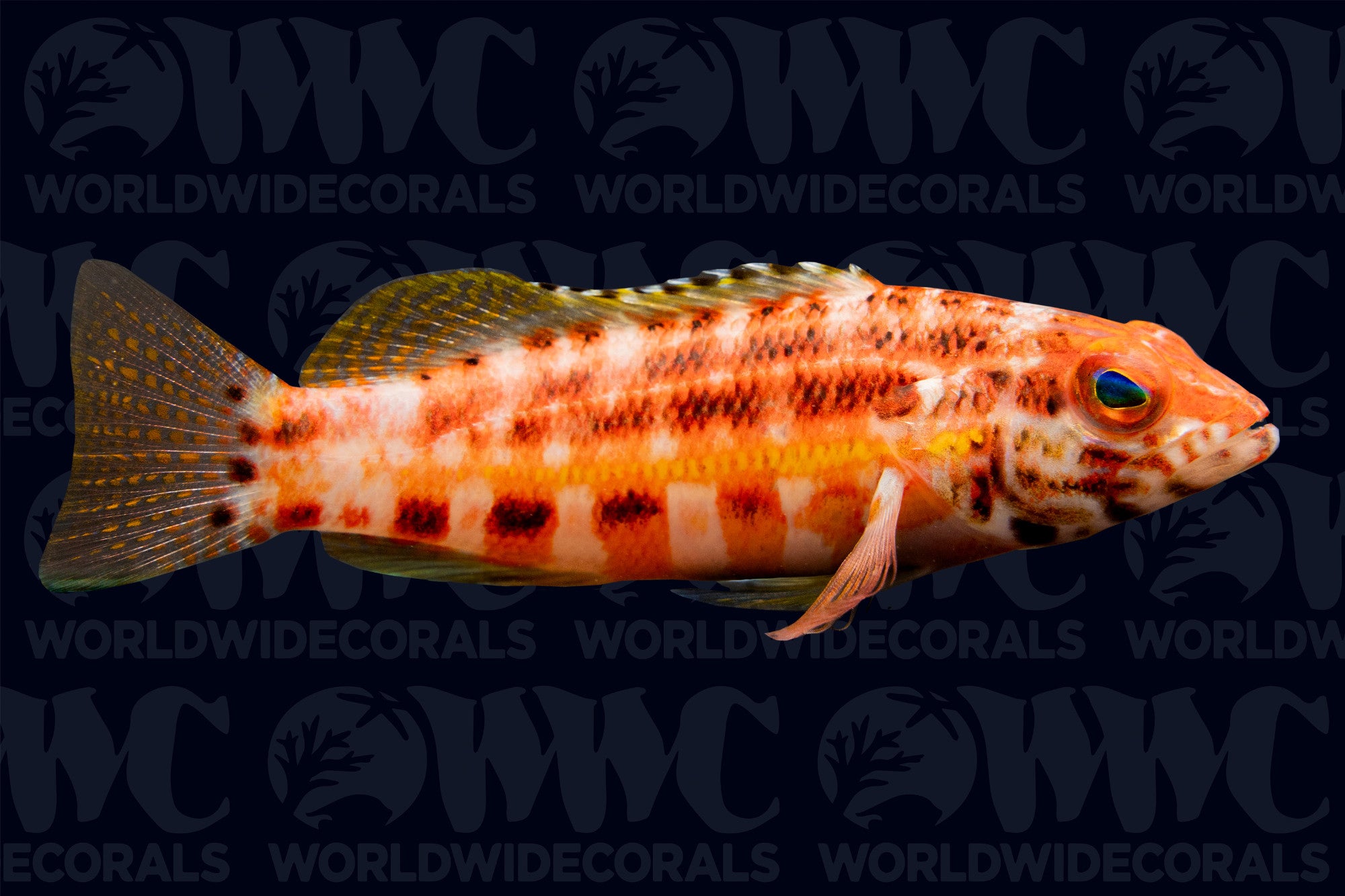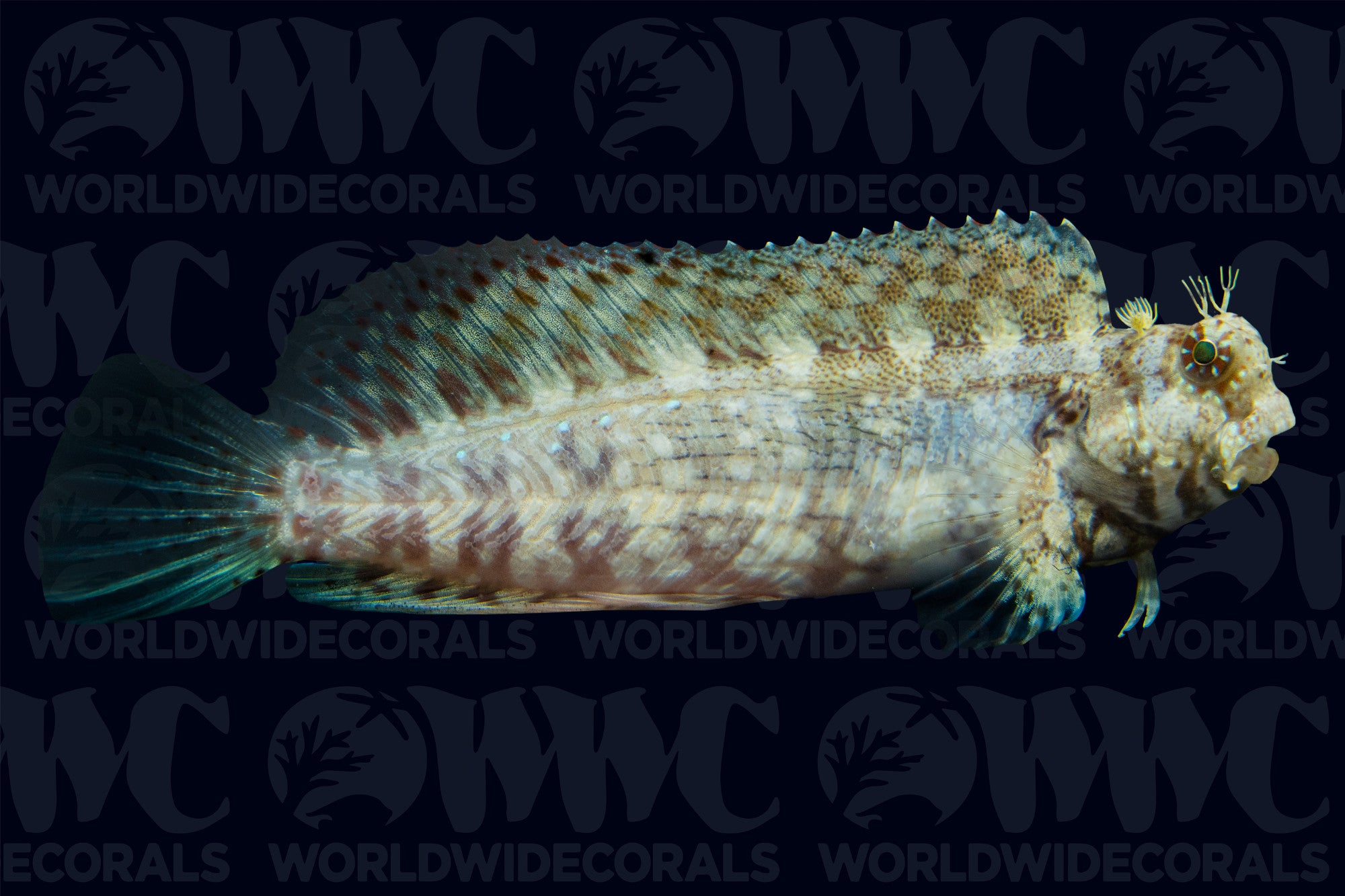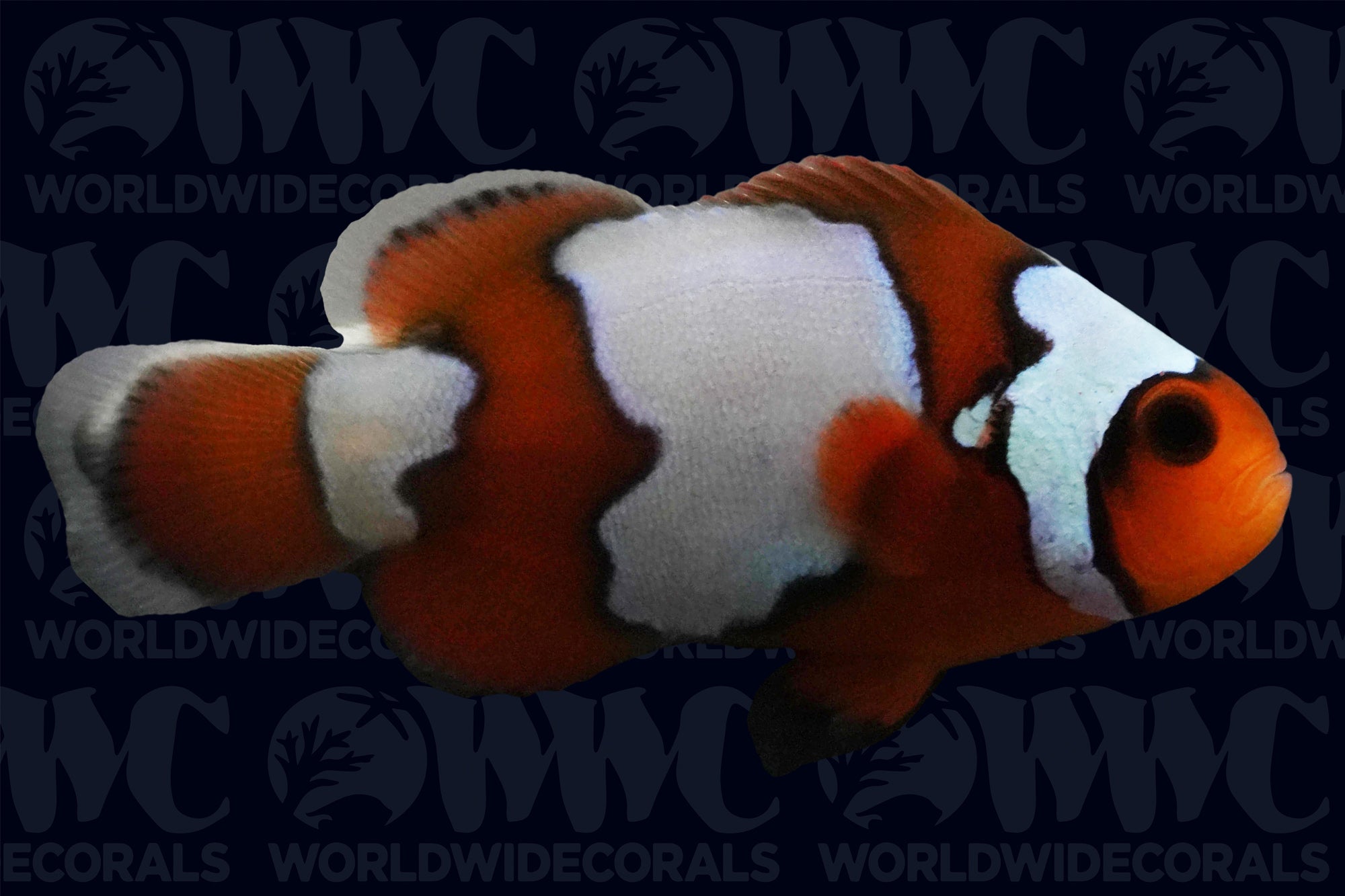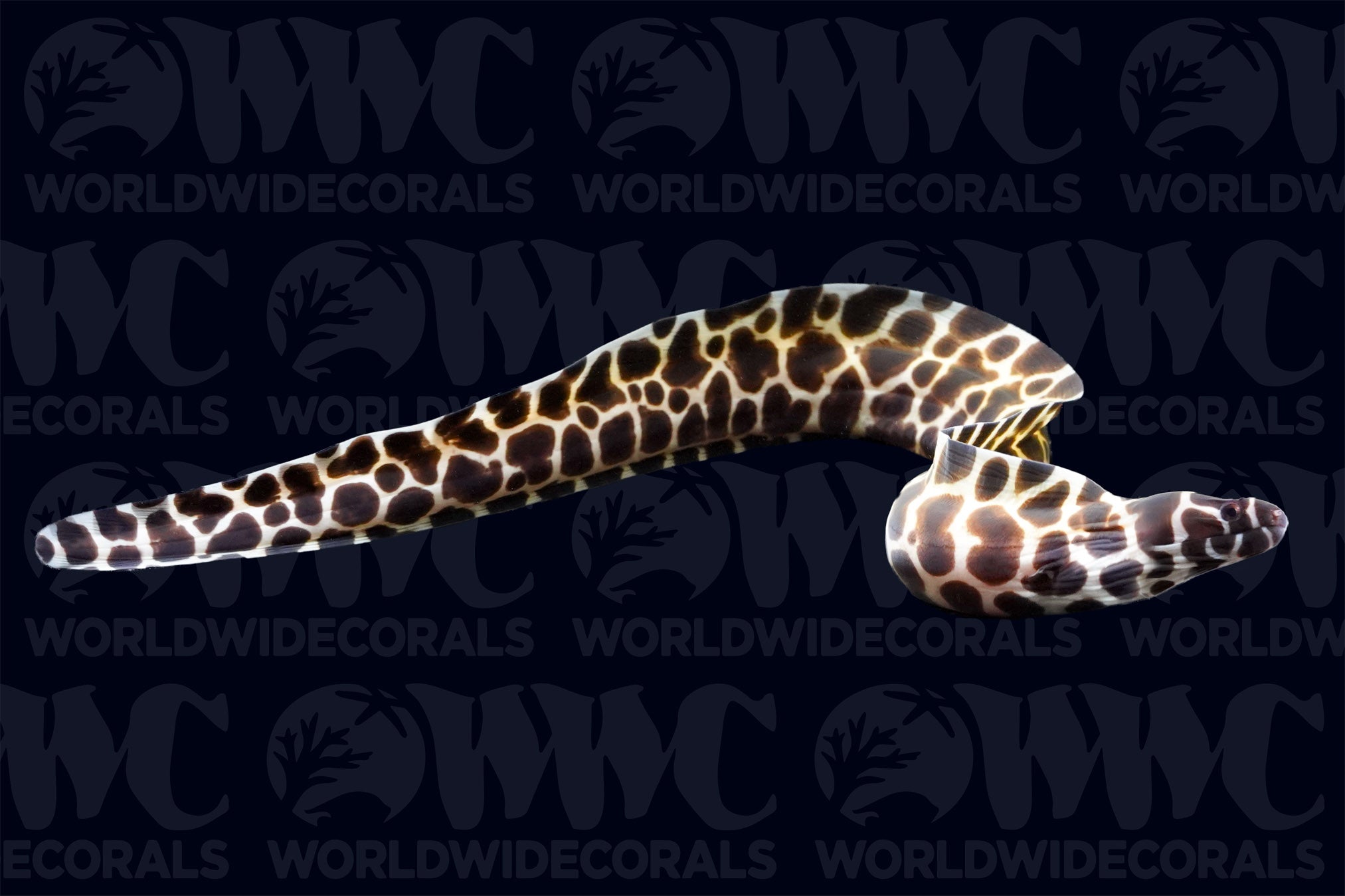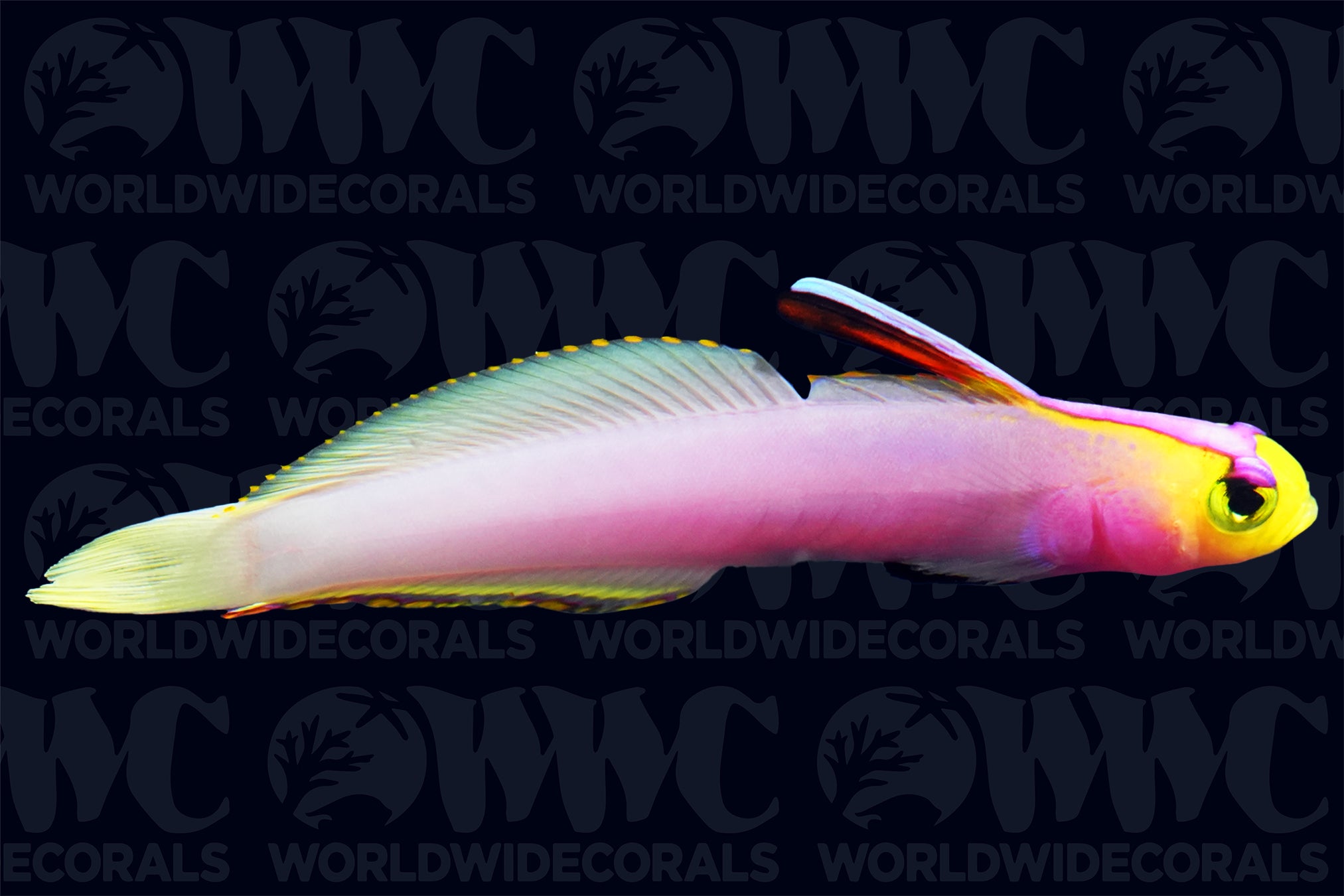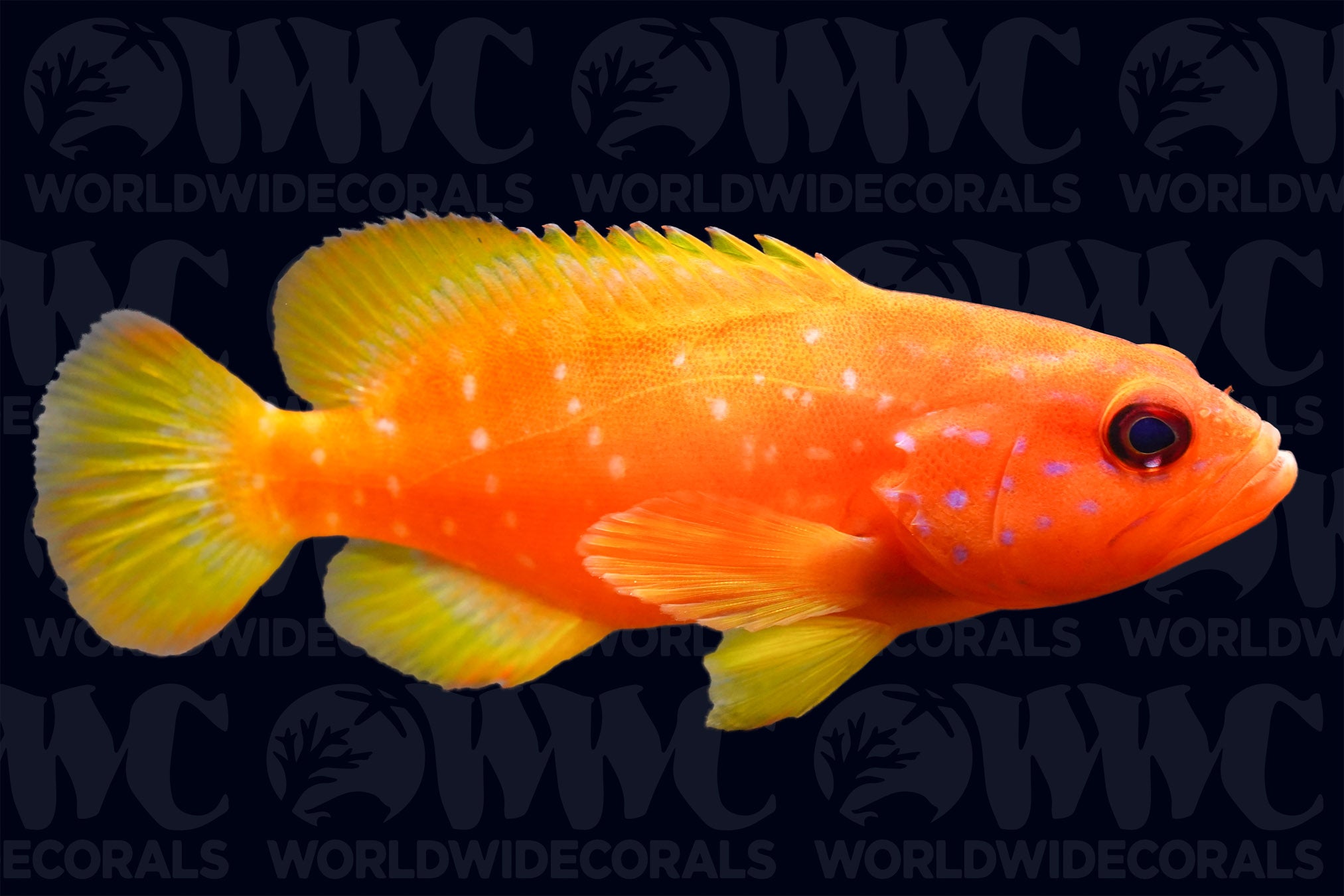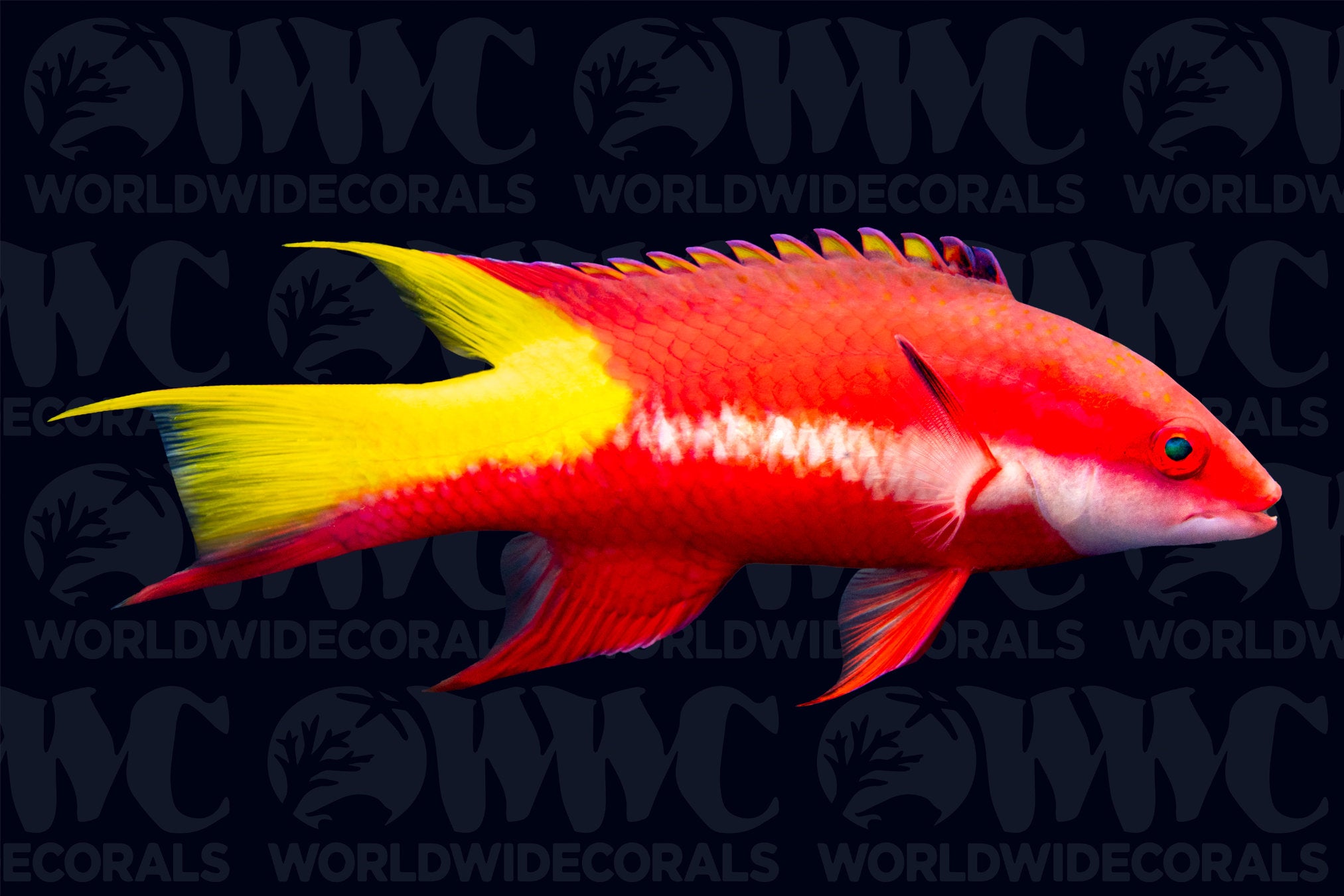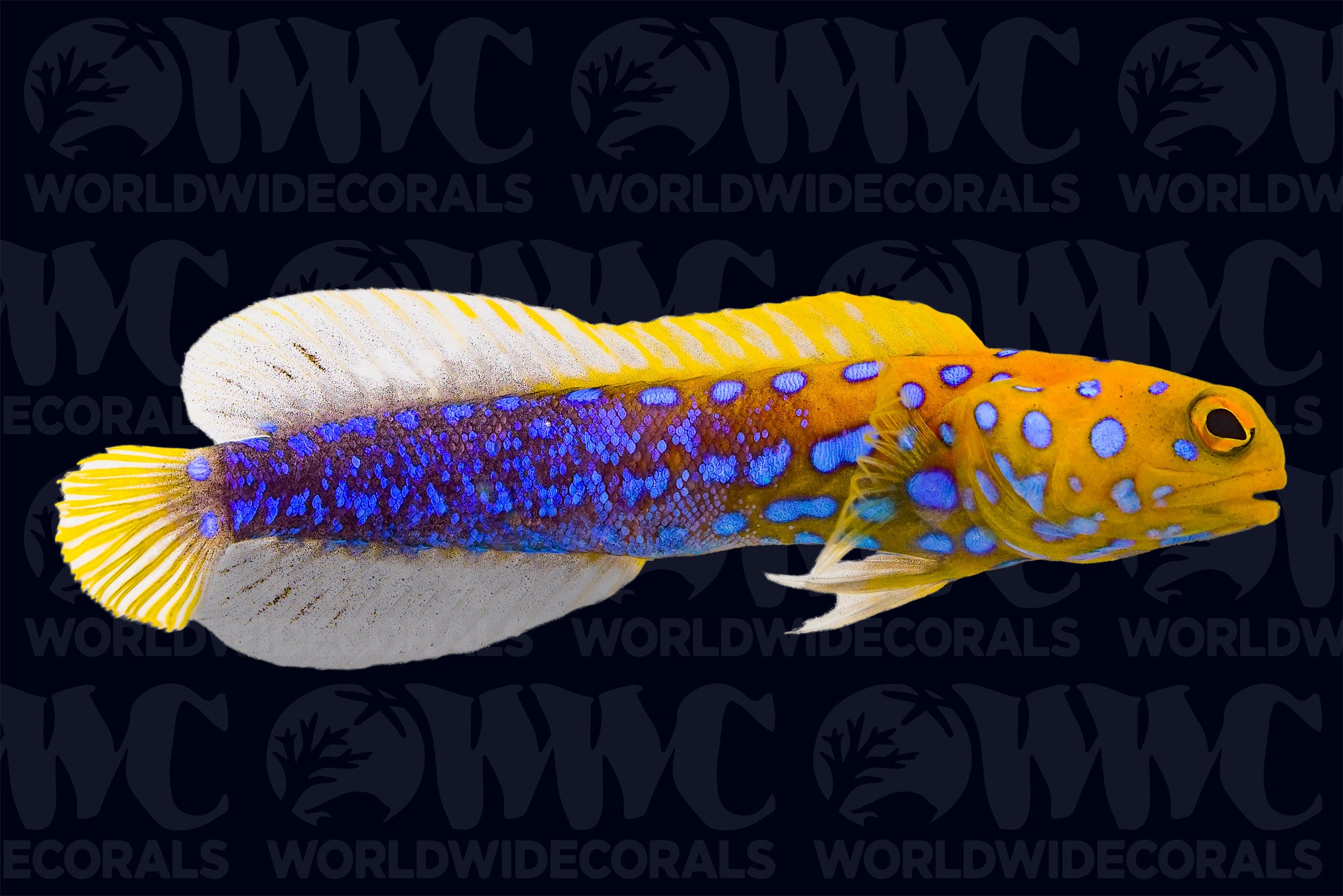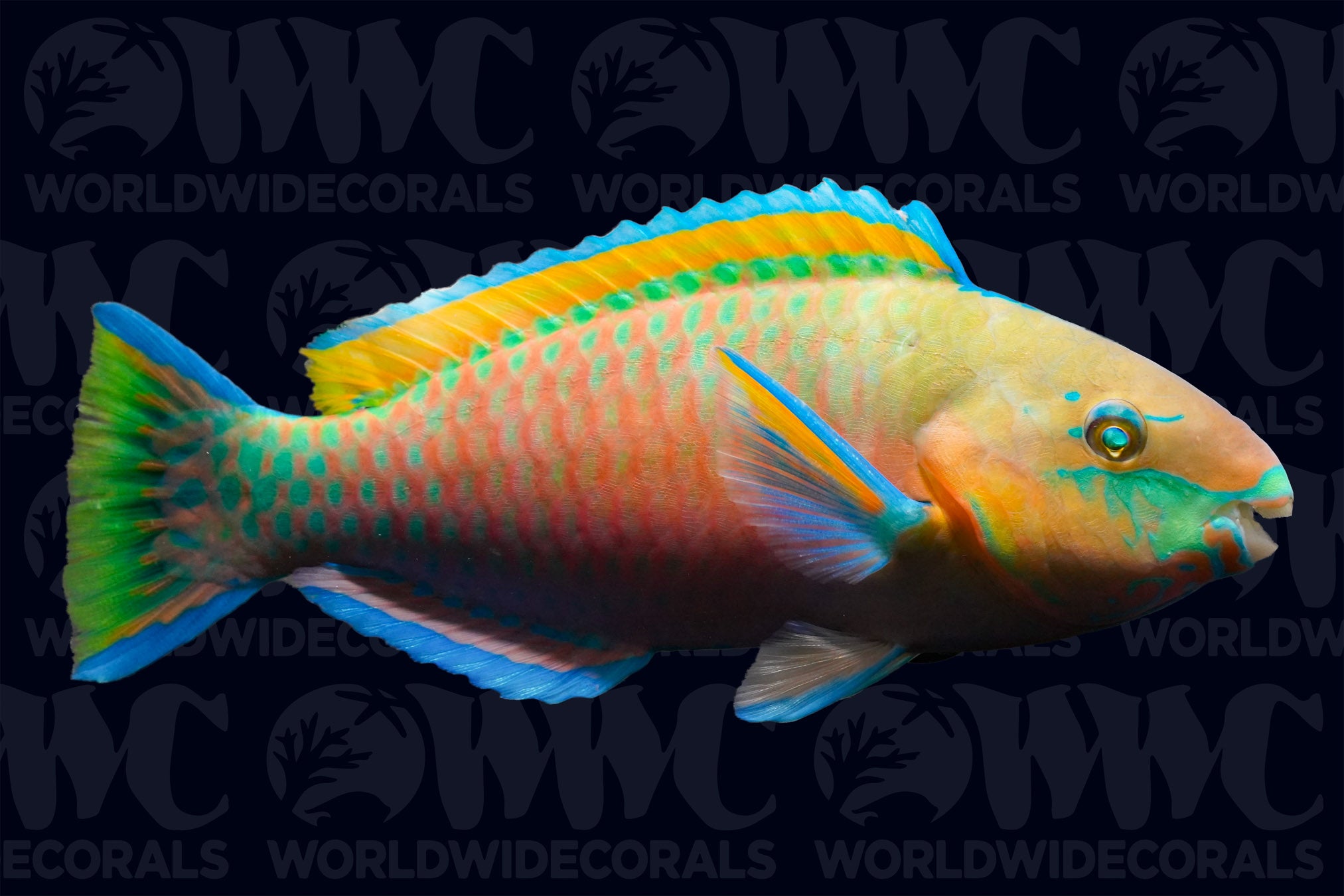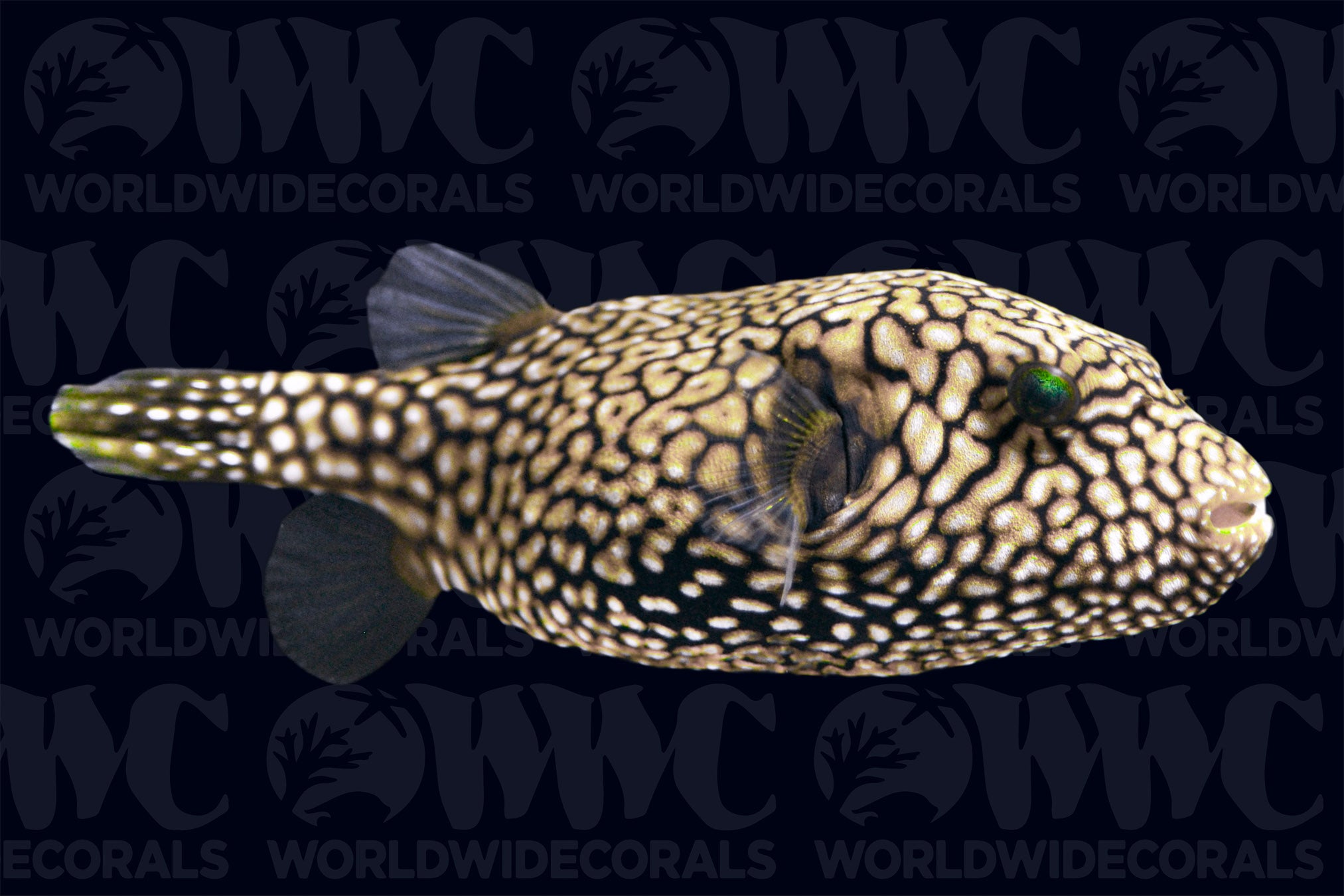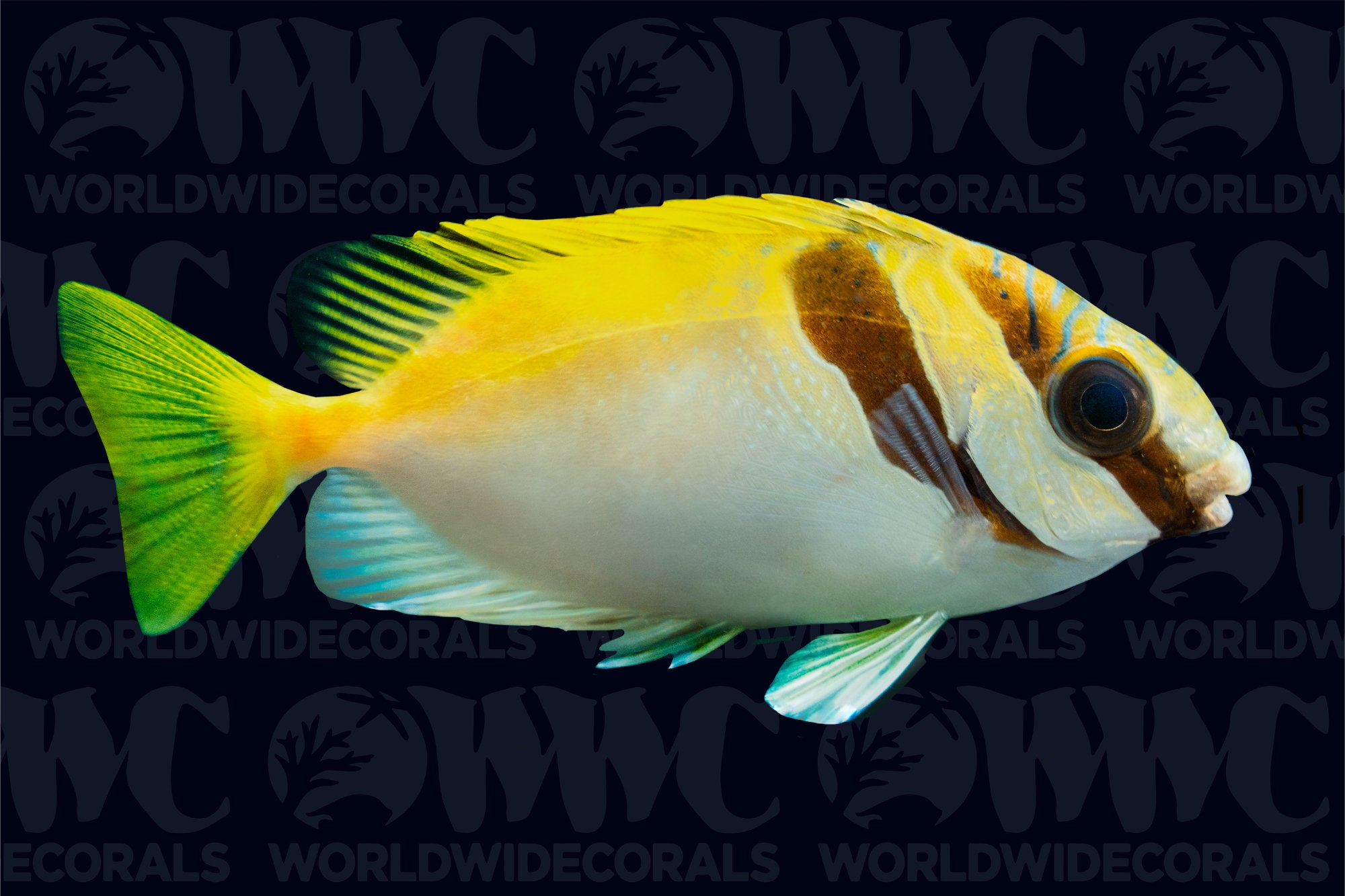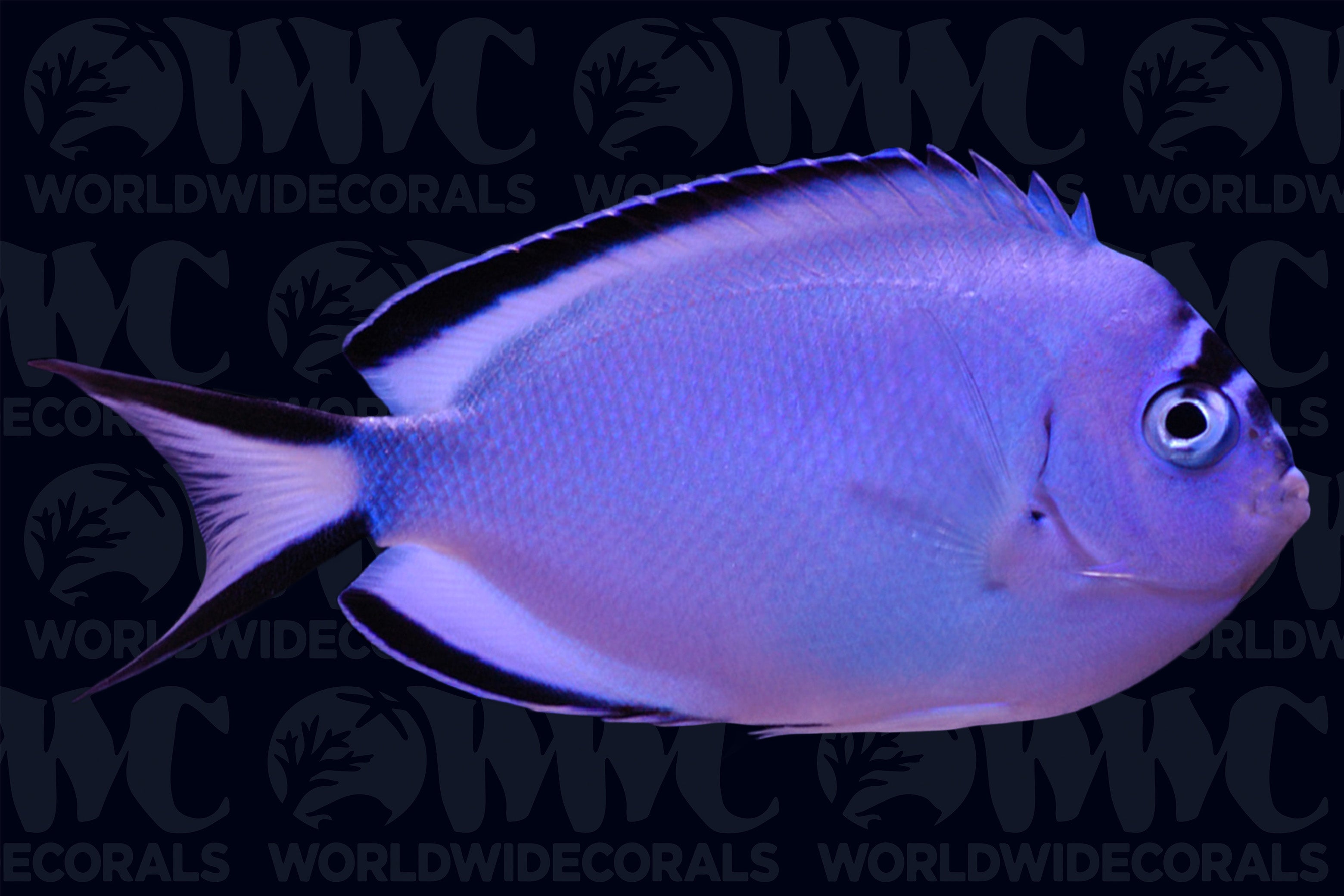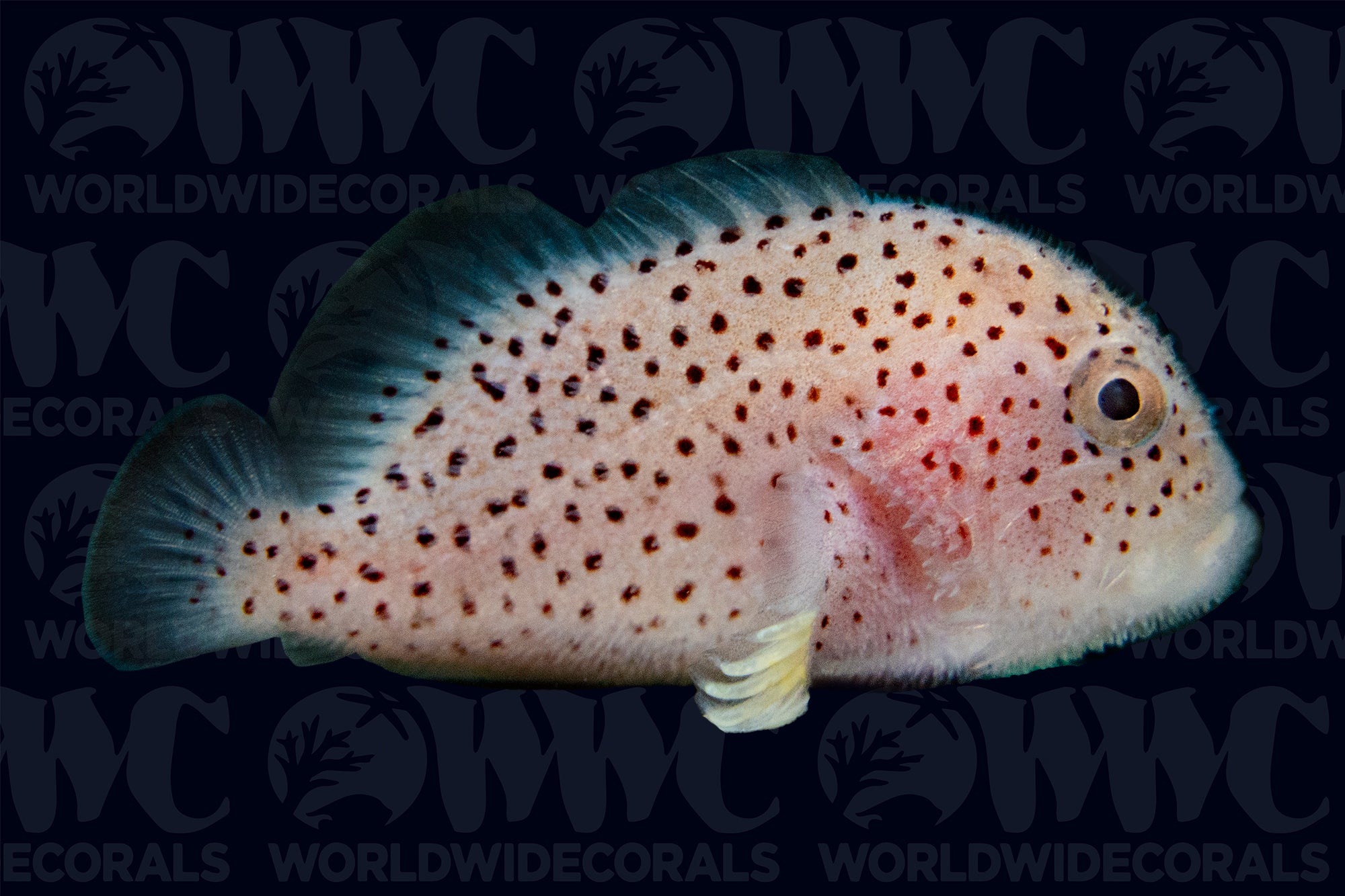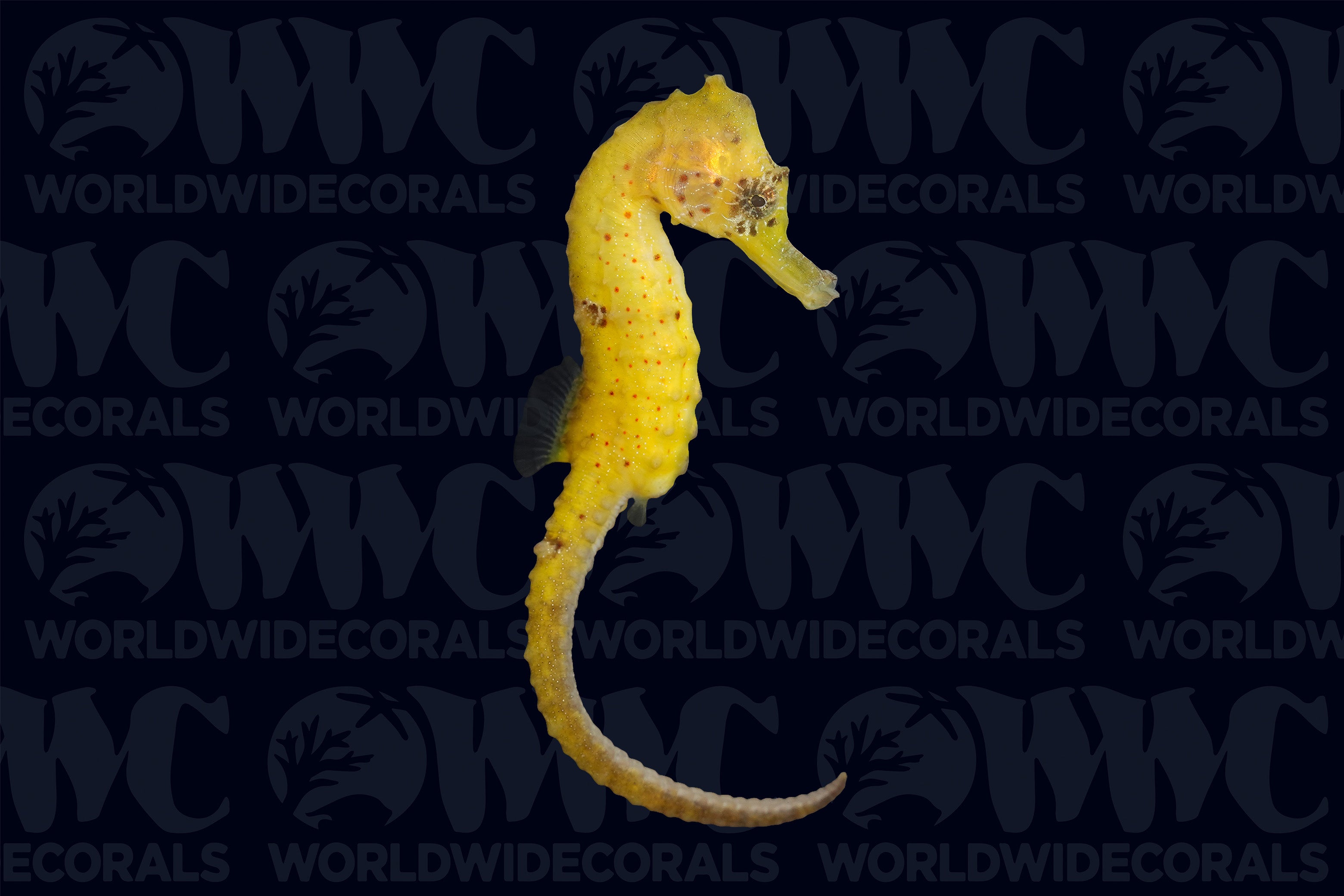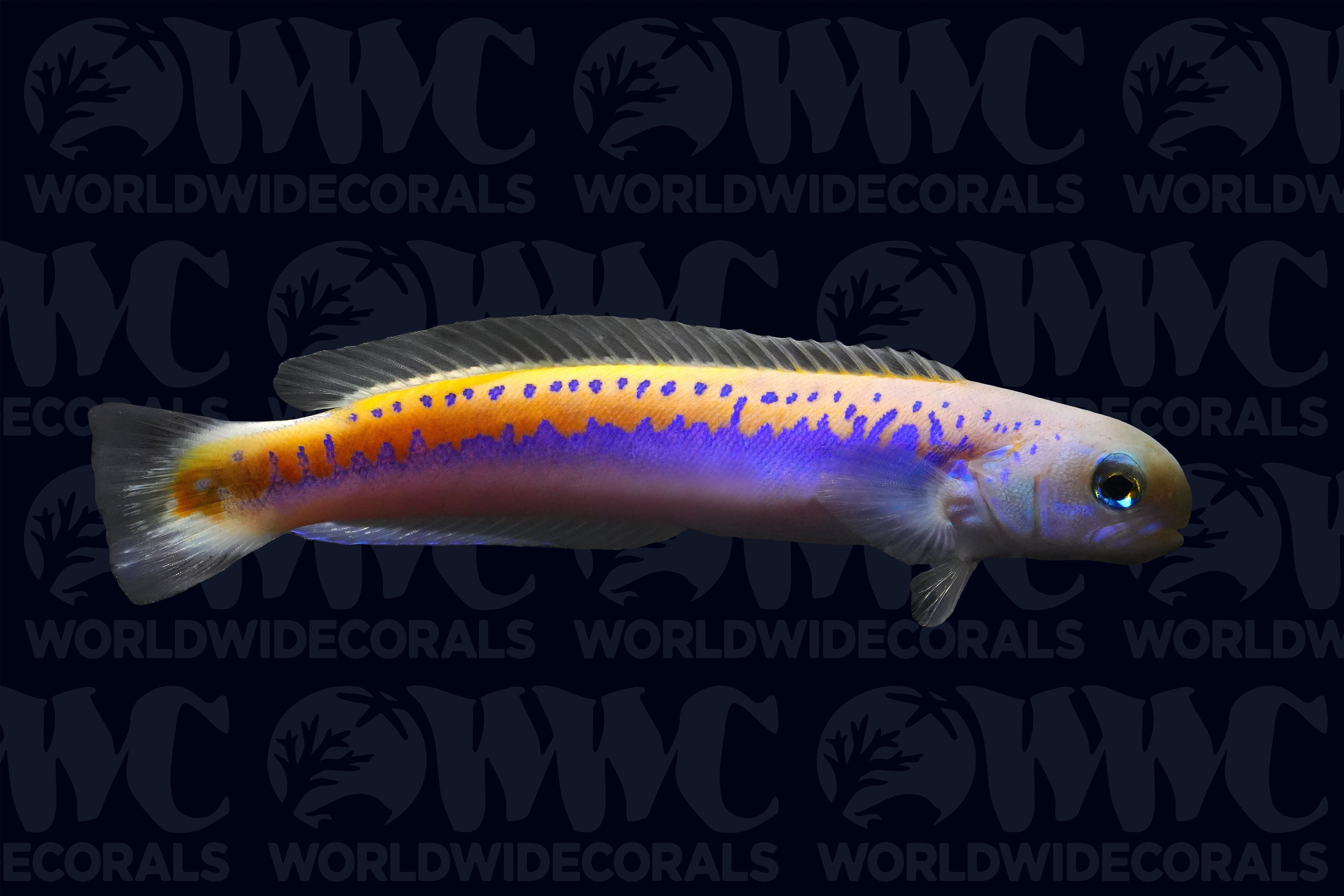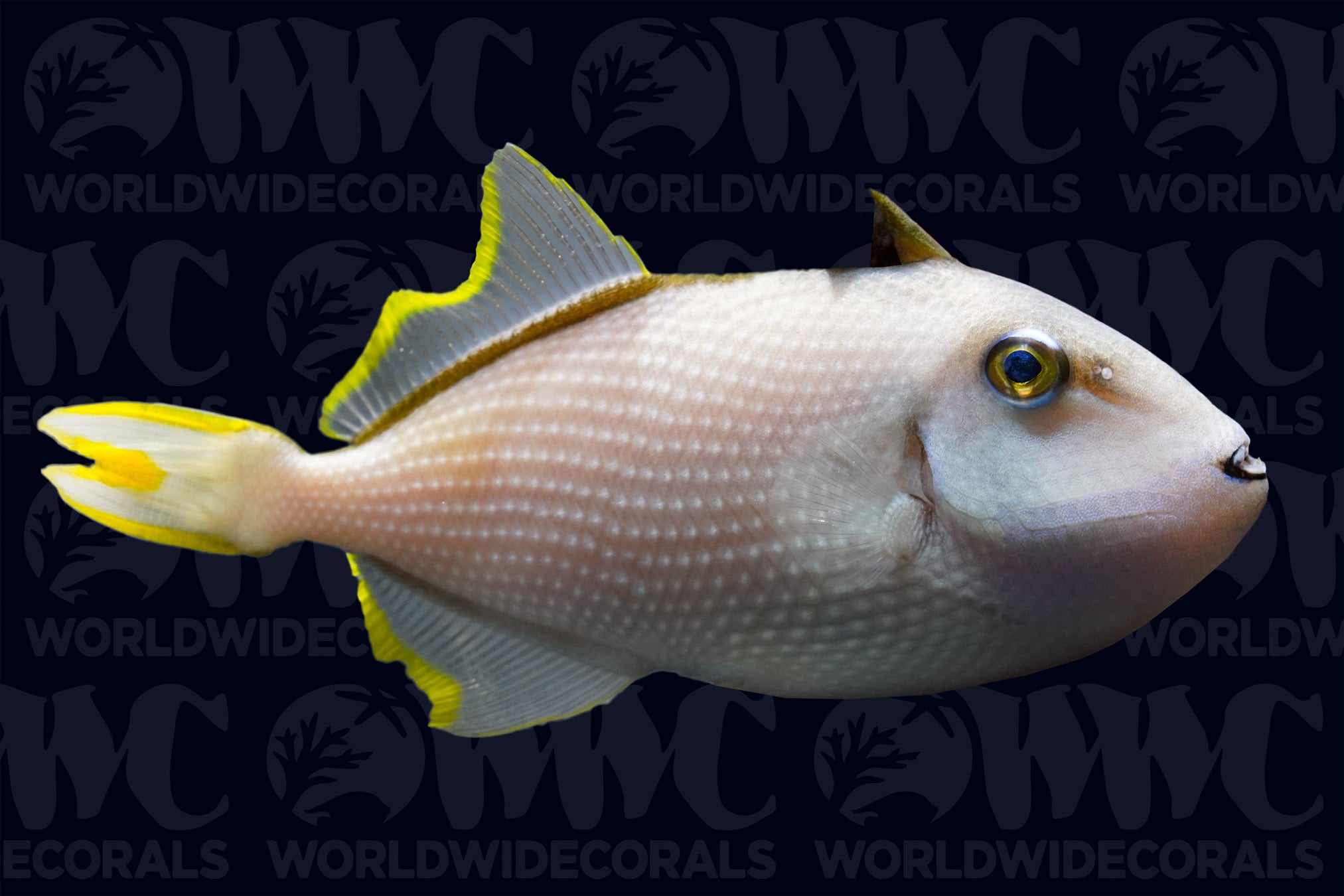Description
Centropyge aurantius
Centropyge angels are favorite with hobbyists due to their small adult size, vibrant colorations and hardiness. The Golden Angel is not common seen in the hobby and is a sought after. Like other dwarf angelfish, they can be aggressive with other angelfish and similarly shaped fish. These should take just about anything you want to feed them, but we suggest a varied diet, ideally fed at least 2 times per day. In the wild, they generally feed on a wide variety of algae, sponges, tunicates and other benthic organisms. Their natural diet also includes nipping on corals, so the Golden Dwarf Angel is not considered reef safe. This angelfish will only grow to be about 4 inches in size and are suited for 50-gallon aquariums or larger. The Golden Dwarf Angel is found in the Western Pacific among corals and sponges of the seaward reef slops up to 60 meters deep.
Centropyge angels are favorite with hobbyists due to their small adult size, vibrant colorations and hardiness. The Golden Angel is not common seen in the hobby and is a sought after. Like other dwarf angelfish, they can be aggressive with other angelfish and similarly shaped fish. These should take just about anything you want to feed them, but we suggest a varied diet, ideally fed at least 2 times per day. In the wild, they generally feed on a wide variety of algae, sponges, tunicates and other benthic organisms. Their natural diet also includes nipping on corals, so the Golden Dwarf Angel is not considered reef safe. This angelfish will only grow to be about 4 inches in size and are suited for 50-gallon aquariums or larger. The Golden Dwarf Angel is found in the Western Pacific among corals and sponges of the seaward reef slops up to 60 meters deep.
3 DAY GUARANTEE | Hassle Free | 100% Satisfaction | Online Orders Only

